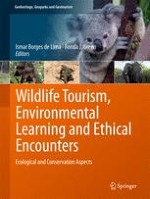2017 | OriginalPaper | Chapter
11. Whale and Dolphin Watching, and Visitors’ Experiential Responses: A Qualitative Study on Comments in a Travel Forum
Authors : Serhat Harman, S. Emre Dilek
Published in: Wildlife Tourism, Environmental Learning and Ethical Encounters
Publisher: Springer International Publishing
Activate our intelligent search to find suitable subject content or patents.
Select sections of text to find matching patents with Artificial Intelligence. powered by
Select sections of text to find additional relevant content using AI-assisted search. powered by
